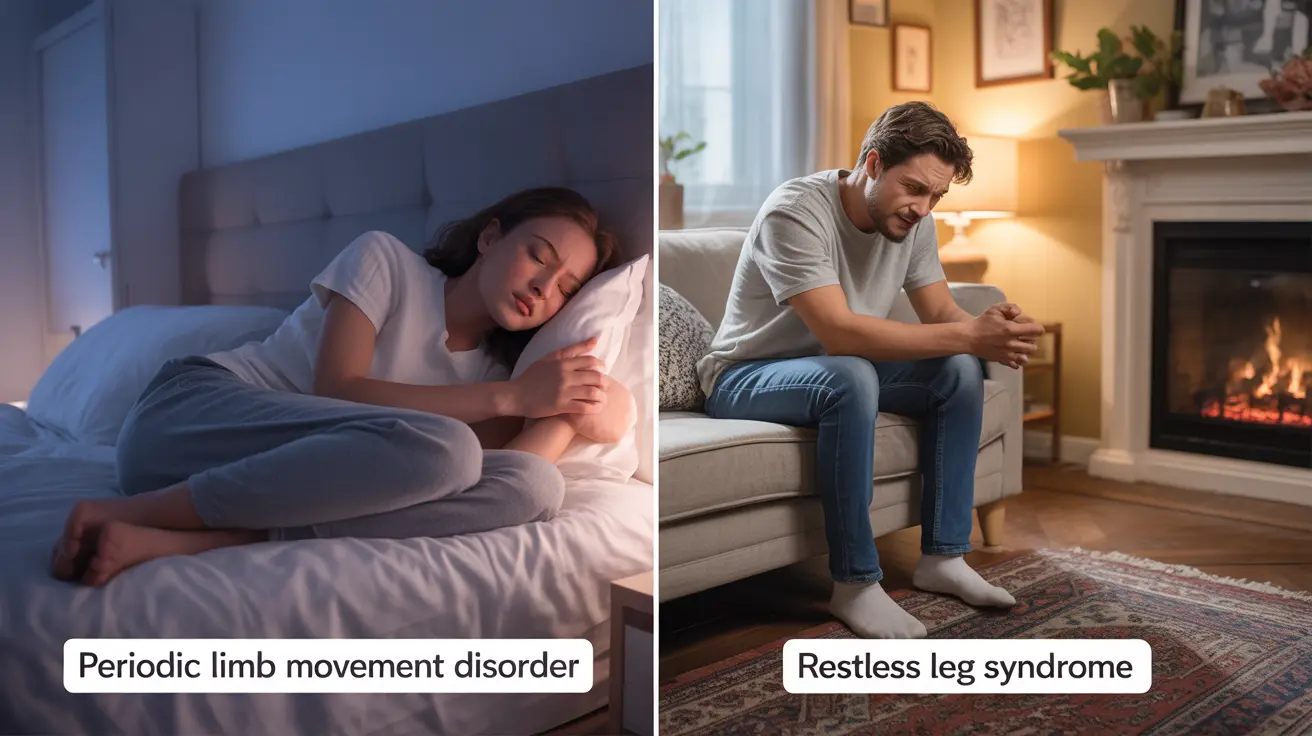Living with sleep-related movement disorders can significantly impact your quality of life. Two commonly confused conditions are Periodic Limb Movement Disorder (PLMD) and Restless Leg Syndrome (RLS). While these disorders share some similarities, understanding their distinct characteristics is crucial for proper diagnosis and treatment.
Key Differences Between PLMD and RLS
Periodic Limb Movement Disorder and Restless Leg Syndrome have several distinguishing features that set them apart. PLMD involves involuntary movements during sleep, typically affecting the legs with repetitive flexing or extending motions. These movements occur without conscious awareness. In contrast, RLS causes uncomfortable sensations while awake, creating an irresistible urge to move the legs, which temporarily improves with movement.
Timing and Awareness
PLMD movements occur exclusively during sleep, and patients are usually unaware of their movements unless informed by a bed partner. RLS symptoms primarily occur during evening hours or periods of inactivity while awake, causing conscious discomfort that affects falling asleep.
Diagnostic Approaches
The diagnosis of these conditions requires different medical approaches. PLMD typically requires a sleep study (polysomnography) to confirm the presence and frequency of limb movements during sleep. RLS, however, is primarily diagnosed through clinical evaluation and patient history, as symptoms occur while awake and are easily described by patients.
Diagnostic Criteria
For PLMD, doctors look for evidence of repetitive leg movements occurring at least 15 times per hour during sleep. RLS diagnosis relies on four essential criteria: an urge to move the legs, symptoms that worsen at rest, improvement with movement, and symptoms that worsen in the evening.
Overlapping Conditions
Many individuals experience both PLMD and RLS simultaneously. Research suggests that approximately 80% of people with RLS also have PLMD, though not everyone with PLMD has RLS. This overlap can complicate diagnosis and treatment planning.
Treatment Strategies
Treatment approaches vary depending on whether a person has PLMD, RLS, or both conditions. Common treatments may include:
- Dopaminergic medications
- Iron supplementation (especially for RLS)
- Sleep hygiene improvements
- Lifestyle modifications
- Medications to improve sleep quality
Lifestyle Management
Both conditions benefit from good sleep habits and lifestyle changes, including:
- Maintaining a regular sleep schedule
- Creating a comfortable sleep environment
- Avoiding caffeine and alcohol
- Regular exercise (but not close to bedtime)
- Stress reduction techniques
Impact on Daily Life
Both PLMD and RLS can significantly affect sleep quality and daytime functioning. People with these conditions often experience excessive daytime sleepiness, difficulty concentrating, and mood changes. Understanding and properly managing these disorders is essential for maintaining quality of life.
Frequently Asked Questions
What are the main differences between periodic limb movement disorder and restless leg syndrome?
PLMD involves involuntary movements during sleep that the person is unaware of, while RLS causes conscious discomfort and an urge to move while awake, particularly in the evening or during periods of inactivity.
How is periodic limb movement disorder diagnosed compared to restless leg syndrome?
PLMD requires a sleep study (polysomnography) for diagnosis, while RLS is typically diagnosed through clinical evaluation and patient history based on specific diagnostic criteria.
Can someone have both restless leg syndrome and periodic limb movement disorder at the same time?
Yes, approximately 80% of people with RLS also have PLMD, though not everyone with PLMD has RLS. The conditions frequently co-exist and may require comprehensive treatment approaches.
What treatment options are available for managing symptoms of both restless leg syndrome and periodic limb movement disorder?
Treatment options include dopaminergic medications, iron supplementation, sleep hygiene improvements, lifestyle modifications, and specific medications targeting sleep quality. The approach is tailored to individual symptoms and needs.
How do periodic limb movement disorder and restless leg syndrome affect sleep quality and daytime functioning?
Both conditions can significantly disrupt sleep, leading to excessive daytime sleepiness, difficulty concentrating, and mood changes. PLMD affects sleep through unconscious movements, while RLS can make it difficult to fall asleep due to uncomfortable sensations.




